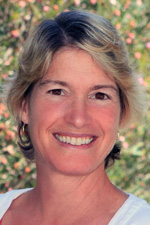By Eva Trieger

LA JOLLA, California –The San Diego Center for Jewish Culture has brought us a rare opportunity to meet three Russian scientists who have immigrated to the United States. For each of these gifted and dedicated individuals, their arrival accompanied the freedom of expression in multiple arenas. The Gotthelf Art Gallery will display the creative, provocative, and beautiful paintings inspired by a censored, scripted life in Russia and one of possibility and promise on our soil.
In American society we tend to view science as discrete from art. The former is serious and exact, the latter whimsical and ethereal. Each of these gifted individuals has melded left and right brain hemispheres to express all aspects intellect and passion. Additionally, each of these scientists has made a mark in his field, and achieved recognition in both his native country and here.
Jacob Fraden, a native of Sverlovsk, Soviet Union, is an inventor, a scientist, an author, and a multimedia artist. Dr. Fraden, a true Renaissance man, arrived in the United States 35 years ago, and has patented at least 50 inventions for medical instrumentation. However, his earliest invention harkens back to his school days. As an 8-year old, Dr. Fraden invented a foot operated inkwell. When the ink splattered all over him, he was left with an indelible impression and knew he’d found a calling!
Fraden received an invitation to Case Western in Cleveland and pursued his post doctorate degree. In 1990, he arrived in San Diego and has made a home with his wife, a classical violinist, a son and daughter. While Fraden was amazed by the lack of censorship and the freedom to express himself upon arrival in this country, he stated that “freedom is abused” here, by those who don’t appreciate our basic liberties and right to free speech.
Artistically, Fraden told me that his paintings demonstrate a surrealistic style, not born of logic, and he prefers to paint objects by considering how he imagines they might behave. He stated that he is not interested in simply creating a replica, but likes to “make a riddle for myself” in his subjects. He does not label himself a Jewish artist, but noted that “Jews dominate human endeavors, including arts.”
Eugenya Zinger spent her youth in Leningrad with her parents. She was very motivated by her passion for performing arts, music and the humanities, so much so, that she longed to attend the St. Petersburg Academy of Arts. This world famous institution is highly competitive so Eugenya’s mother insisted she study something more concrete and pragmatic.
With a Masters in Chemical Engineering, this motivated young woman worked in research and design of explosives. In 1975 she and her husband relocated to Montreal. Eugenya worked for Marconi, in Pharmaceuticals and earned a Masters
in Analytical Chemistry. She enjoyed the work in laboratories, but eventually, when the Canadian economy suffered setbacks, her family came to California.
Painting and portraiture has allowed Zinger to maintain her creative spark and work with her hands. She described her style as Bohemian, and has entered her portraits in contests, taking first place in the
San Diego Portrait Society. Her overriding inspiration is to “make my children proud”. She told me that she wants to be an example for her kids that one “must keep active and keep awake.”
Judaism may well have been further impetus for Zinger who grew up being “brainwashed that one must become an achiever, especially if he is a hated minority.” She felt that in Soviet society independence is a vital ingredient in mother’s milk and it is instilled from infancy.
Dr. Renata Shafor worked as Internist, in the Soviet Union, making house calls in between her clinic hours. In 1979, she and husband and two children, along with her mother, came to the United States and made their home in Missouri. She completed her Neurology Residence and then in 1995 pursued a Fellowship in Sleep Disorders in La Jolla.
Her desire to share her love of the arts was always with her, and when her Neurology practice finally slowed down a bit, Dr. Shafor was finally able to indulge her inner artist and explore her true tendencies. She finds this outlet of expression in painting and told me that through her art she finds “beauty in the complexity of life.”
Dr. Shafor did not have a great deal of formal artistic training but has studied under private teachers at the Athenaeum. She devotes a lot of energy and time to this practice and incorporates what she sees around her in her work. She is a huge believer in appreciating what one has, and believes that basic human rights in America give more hope and opportunity to those with challenges than in her previous home.
These artists fascinate and amaze with their unending list of achievements, passion, and energy to stimulate imagination and hope. The Gotthelf Art Gallery at the JCC will display these gems and showcase these unique individuals until November 28.
*
Trieger is a freelance writer who specializes in the arts. She may be contacted at eva.trieger@sdjewishworld.com